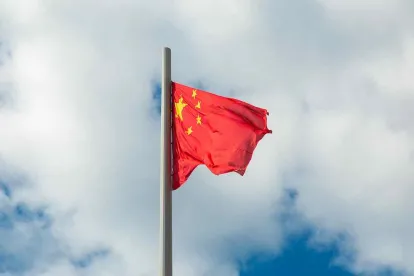Revised Draft of the Guidelines for Patent Examination
The China National Intellectual Property Association (CNIPA) has recently published a revised draft amendment of the Guidelines for Patent Examination (“the draft Examination Guidelines”) that aims to amend and clarify the examination practice to align with the latest version of the Chinese Patent Law, which came into force in June of 2021. The draft Examination Guidelines are still under review, having recently completed a public feedback period, with three prior draft versions incorporating refinements from the public feedback (published in 2020-2022). It is believed the finalized version of the Examination Guidelines will not differ greatly from the draft version because of recently announced CNIPA plans for promoting the implementation of the “Opinions on Strengthening Intellectual Property Protection”, which stated that the draft Examination Guidelines will be finished around the end of 2022. However, the finalized Examination Guidelines have yet to be published.
If adopted in its current version and without further modifications, this amendment of the Examination Guidelines would have a considerable impact on many aspects of patent law and practice in China. Although many changes to the implementation of Chinese Patent Law are outlined in the draft Examination Guidelines, one important change is the abolishment of the 15-day rule for electronically-filed applications, which has the potential to drastically change docketing and shorten response periods to patent rejections, and other communications, in China.
Current 15-day Rule and Proposed Changes
In the current 15-day rule, outlined in the current Examination Guidelines at Part 5, Chapter 6, section 2.3.1, it states that when a notification or decision is delivered by post, the fifteenth day from the date of mailing shall be presumed to be the date on which the party concerned receives the notification. This rule effectively tolls the deadline to responding to an Office Action by adding 15 days from the mailing date of the office communication. For example, in a First Office Action issued by the Chinese Government, having a four-month period of response, it is mailed on March 6, 2023, and received by a U.S. based patent applicant on March 17, 2023, the actual due date for responding to the First Office Action would be July 21, 2023. This differs from patent practice in the United States, which offers no grace period, and the period of response beginning when the communication is mailed or sent electronically.
The draft Examination Guidelines amends the Examination guidelines to eliminate the 15-day rule for any electronically filed patent application, which is the vast majority of applications today. Thus, in the previous example, a response to the First Office Action would be due July 6, 2023, with the patent applicant not receiving any grace period and losing 15 extra days to respond.
Impact of the Elimination of the 15-day Rule on U.S. Law Firms
For U.S.-based law firms, the 15-day rule allows them to manage their docketing systems more effectively. Without this rule, firms will be required to adjust their docketing systems to account for the reduced response period. This could be challenging, particularly for firms that have a large volume of patent applications in China. It would require firms to re-evaluate their docketing procedures and make significant changes to their workflow processes. It would also likely lead to increased costs and administrative burdens.
Further, the elimination of the 15-day rule would increase the risk of missed deadlines for U.S.-based law firms. Reduced response periods would leave little margin for error, and any delays in receiving official notification from the Chinese Patent Office could have significant consequences, including the loss of patent rights. To illustrate, this change would significantly reduce the time to handle re-examination notices issued (1 month to respond), and Office Actions subsequent to the First Office Action (2 months to respond). This reduction is particularly significant to U.S. applicants who may require more time for translation.
Conclusion
The proposed elimination of the 15-day rule in Chinese Patent Law that allows for a 15-day grace period when responding to a Chinese Office Action could have significant implications for U.S.-based law firms. Specifically, the elimination of the rule would shorten already tight deadlines present in some official communications, and would require major updates to docketing systems. The current 15-day rule provides a critical buffer period for patent applicants, particularly those based in the U.S. and other foreign nations.



 />i
/>i

